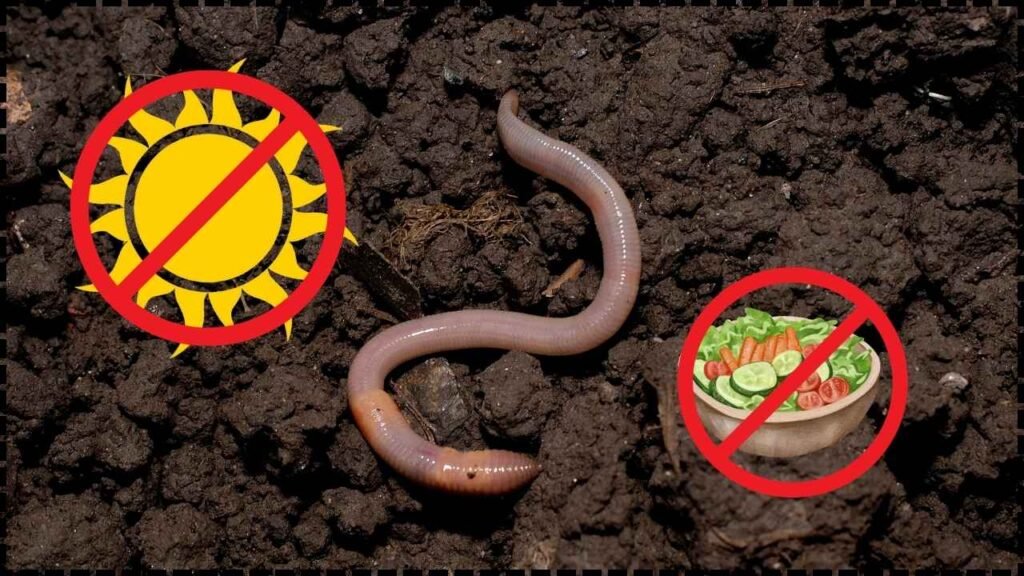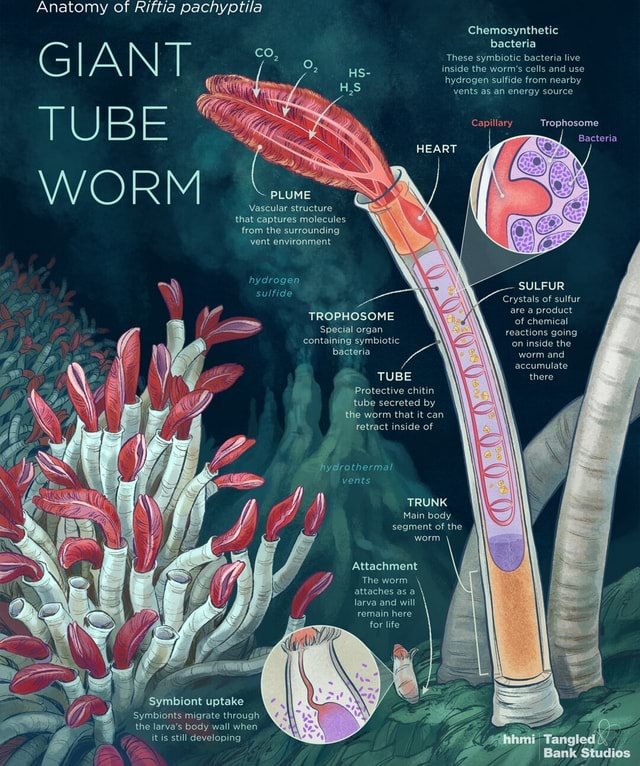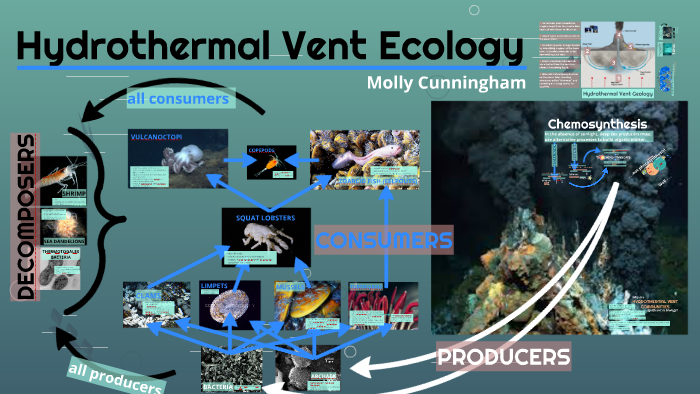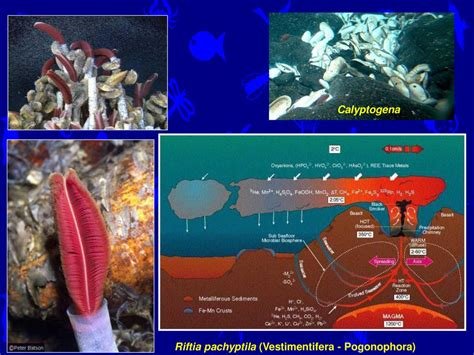
Giant Worms Survive by Eating Only Chemicals!: In the darkest depths of the ocean, miles away from sunlight, where pressures reach mind-boggling levels and temperatures can swing from freezing cold to boiling hot, giant worms are thriving without ever seeing the sun. These creatures, called Riftia pachyptila or giant tubeworms, survive by eating chemicals instead of traditional food. This article digs into their fascinating survival tactics, offering up clear explanations, fun facts, and expert insights for everyone—from curious kids to seasoned pros.
Giant Worms Survive by Eating Only Chemicals!
Giant tubeworms are remarkable creatures proving life’s tenacity in the harshest conditions. Thanks to their bacterial partners and clever dual carbon-fixation strategies, they survive without sunlight in toxic, high-pressure environments. These tubeworms shape unique ecosystems, inspire future technology, and remind us how much we still have to learn about our planet’s hidden corners. Protecting their fragile homes is a must, not just for science but for humanity’s future too.
| Topic | Details |
|---|---|
| Organism | Riftia pachyptila (giant tubeworm) |
| Habitat | Hydrothermal vents, East Pacific Rise, depths >2,500 meters |
| Size | Up to 6 feet tall |
| Special Features | No digestive system; bright-red plume containing hemoglobin |
| Survival Mechanism | Symbiotic bacteria perform chemosynthesis using hydrogen sulfide |
| Carbon Fixation Processes | Calvin-Benson-Bassham (CBB) cycle and reductive tricarboxylic acid (rTCA) cycle |
| Unique Adaptations | Dual carbon fixation pathways to adapt to changing vent chemistry |
| Research & Studies | Harvard University, Nature Microbiology, 2024 |
| Environmental Threats | Deep-sea mining, pollution |
| Official Reference | Nature Microbiology Study |
What Are Giant Tubeworms?
Giant tubeworms are massive for worms, sometimes reaching up to 6 feet long. They sport a bright red plume that looks like an underwater feather duster. But here’s the wild part: these worms don’t have a mouth, stomach, or gut. So, how do they get their energy? They don’t eat food the way animals usually do.
These worms live clustered around hydrothermal vents — underwater geysers on the ocean floor that blast out hot, mineral-rich water. Unlike plants, which rely on sunlight for energy through photosynthesis, these worms rely on chemosynthesis — a process that uses chemicals from the vents, like hydrogen sulfide, to create food.
The Science Behind Giant Worms Survive by Eating Only Chemicals!
The secret sauce for these tubeworms is their symbiotic bacteria living inside a special organ called the trophosome. These bacteria suck up toxic chemicals like hydrogen sulfide from the vent water (stuff that would kill most animals) and convert this into sugars and organic compounds that feed the worm.
Scientists at Harvard unveiled that these bacteria use two different carbon fixation pathways to make their food — switching based on the surrounding chemical environment. These are:
- The Calvin-Benson-Bassham (CBB) cycle, common in plants and many bacteria.
- The reductive tricarboxylic acid (rTCA) cycle, which is energy efficient in tough conditions.
This metabolic flexibility acts like a hybrid engine, letting tubeworms survive the wild temperature and chemical swings near hydrothermal vents.
Breaking It Down to Basics
Picture this: a city runs on two power plants. When one runs low, it instantly switches to the other — no blackouts. The bacteria inside tubeworms do exactly this. They swap between two food-making systems to keep the worm fueled, no matter what’s going down in their deep-sea neighborhood.
The worm’s plume absorbs both oxygen and hydrogen sulfide, thanks to specially adapted hemoglobin, and delivers these chemicals safely to the bacteria hosted inside.
Additional Cool Deep Sea Adaptations
Other worms nearby have interesting tricks to survive:
- The Paralvinella hessleri accumulates arsenic and sulfide on its skin, turning them into less toxic minerals — a natural detox.
- The Pompeii worm (Alvinella pompejana) can survive blistering temperatures up to 176°F (80°C)!

Ecological Importance of Giant Tubeworms
Tubeworm communities create oasis-like habitats on the otherwise barren ocean floor, supporting diverse marine life. These worms and their bacteria form the foundation of a unique ecosystem where fish, crabs, and other creatures live. They recycle chemicals and provide shelter.
This relationship highlights the fascinating food web of the deep sea, which depends not on sunlight but on chemical energy, rewriting our understanding of what life needs.
Role in Deep Ocean Food Web
Giant tubeworms are not only producers but also ecosystem engineers. By forming dense ventside forests that offer shelter for many species, they support biodiversity in one of Earth’s harshest environments. Small creatures find protection in their tubes, while predators like crabs and fish visit these areas to hunt.
Without tubeworms, many vent organisms would struggle to survive, highlighting their keystone ecological role.
Potential Biotechnological Applications Inspired by Tubeworms
The ability of tubeworm bacteria to fix carbon using two pathways could inspire:
- New carbon capture technologies to help reduce greenhouse gases.
- Enzymes stable under extreme conditions for industrial processes.
- Novel antibiotics or medicines derived from deep-sea microbes.
These applications show promise in energy, medicine, and environmental management, making tubeworm studies highly valuable beyond marine biology.

Genetic Adaptations for Extreme Life
Recent genetic studies reveal tubeworms have unique genes enabling them to tolerate toxins, high pressure, and temperature shifts. Their genomes also hold clues about how symbiotic relationships evolve and persist, providing models for understanding partnerships between species.
Studying their DNA helps scientists understand resilience, adaptation, and possible evolutionary pathways for life in extreme habitats.
Habitat and Distribution: East Pacific Rise and Beyond
Giant tubeworms are clustered primarily around hydrothermal vents along the East Pacific Rise and Galapagos Rift, found at depths exceeding 2,500 meters. These vents are dynamic environments that can appear or vanish due to volcanic and tectonic activity.
The tubeworms grow fast — reaching nearly 5 feet in under two years — and are among the first colonizers when new vents open. However, the habitat is patchy and ephemeral. Population studies show genetic diversity varies with vent activity levels; faster tectonic spreading leads to frequent habitat turnover and lower genetic diversity in worm populations.
This boom-and-bust life cycle means tubeworm populations can expand rapidly after eruptions but may also face local extinction when vents cool or are covered by lava flows.
Threats to Their Habitat
Though tucked away in the deep ocean, hydrothermal vent ecosystems face growing risks:
- Deep-sea mining threatens to destroy vent fields and their unique fauna.
- Pollution, including microplastics, has reached even the ocean’s deepest trenches.
- Climate change could alter ocean chemistry and vent dynamics.
Protecting these habitats is vital to preserving biodiversity and the scientific potential they hold.

How Scientists Study These Giant Worms Survive by Eating Only Chemicals!?
Exploring these extreme depths requires robotic submersibles and manned submarines capable of descending thousands of meters. Research vessels deploy these tools to collect samples and monitor vent chemistry and biology.
On-board pressure labs allow scientists to mimic deep-sea conditions and study tubeworm metabolism and symbiosis. Advanced genetic sequencing and chemical analyses help unravel how these tubeworms and bacteria work in concert.
Practical Lessons From Giant Tubeworms
- Adaptability Matters: Tubeworms show the importance of metabolic flexibility for survival in fluctuating environments.
- Symbiotic Relationships Are Powerful: These worms depend entirely on bacteria, highlighting life’s reliance on cooperation.
- Protect Extreme Ecosystems: The fragile deep-sea vents need conservation to sustain their unique communities.
The Rock That Stunned Science: An Alien Mineral That Breaks All the Rule of Heat.

















